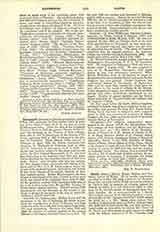

Davenport, Diocese of (DAVENPORTENSIS), erected May 8, 1881, embraces the four southern tiers of counties of the State of Iowa, U.S.A., an area of about 22,873 square miles. From the time of the Louisiana Purchase down to 1827 the present Diocese of Davenport was included in the Diocese of New Orleans; from 1827 to 1837 it formed part of the Diocese of St. Louis; and from 1837 to 1881 it belonged to the Diocese of Dubuque. When Bishop Loras arrived in Dubuque in April, 1839, his diocese contained two churches, St. Raphael‘s in Dubuque, built in 1836, and St. Anthony’s in Davenport, built in 1838. In all the vast territory subject to him there was but one priest, the Rev. Samuel Mazzuchelli, O.P., who had been laboring in the territory since 1835 and under whose direction the two churches referred to had been built. Bishop Loras brought with him two priests, the Rev. Joseph Cretin, afterwards first Bishop of St. Paul, and the Rev. J. A.M. Pelamourgues, whom the people of St. Anthony’s parish, Davenport, and indeed of the whole Diocese of Davenport, venerate as their first resident pastor. Father Pelamourgues, the first citizen of Davenport in his day, a leader in every good work, was pastor of St. Anthony’s from 1839 to 1868. Of the generous, zealous laity associated with him in his work in those early days, Mr. and Mrs. Antoine Le Claire deserve special mention. Notable among their benefactions was the donation to the church of the block of ground in the heart of the city on which St. Anthony’s church was built.
GROWTH OF CATHOLICISM.—Bishop Loras and his successors in the See of Dubuque did much to promote the immigration to Iowa of German and Irish Catholics, with the result that Iowa has a large Catholic rural population. Between the years 1840 and 1850 the number of resident pastors in the present Diocese of Davenport increased from one to five. By the year 1860 the number had increased to thirteen, and by 1870 to twenty. During the decade following 1870 the tide of Catholic immigration was heavy, and at the time of its formation, in 1881, the diocese contained seventy priests and a Catholic population estimated at 45,000. Since its formation the diocese has had a continuous, healthy growth.
BISHOPS.—(I) JOHN MCMULLEN, was born in Ballynahinich, Co. Down, Ireland, January 8, 1832, and ordained priest in Rome, June 20, 1858. He was consecrated, July 25, 1881, at Chicago, where at the time of his appointment to Davenport, he was vicar-general. He entered with zeal and vigour into the work of organizing the new diocese. The cause of Catholic education was his especial concern. St. Ambrose College was founded by him in September, 1882. His health soon failed, and he died July 4, 1883.
HENRY COSGROVE, second bishop, was born at Williamsport, Pennsylvania, U.S.A., December 19, 1834. He emigrated to Dubuque in 1845 and was ordained priest August 7, 1857. He was assigned at once to St. Marguerite’s, Davenport, with which church he was ever afterwards connected. When Bishop McMullen went to Davenport, he chose St. Marguerite’s for his cathedral church and made Father Cosgrove his vicar-general. Father Cosgrove was consecrated Bishop of Davenport, September 14, 1884, and for more than twenty-two years gave his best efforts to the cause of religion in his diocese. Under his guidance many new churches were erected; schools and other institutions established or enlarged. Worthy of special mention are the Sacred Heart cathedral, St. Vincent’s home for orphans, and St. Ambrose College.
Two years before his death, Bishop Cosgrove, enfeebled in health, was given a coadjutor in the person of his vicar-general, the Very Rev. James Davis. Bishop Davis was born in Ireland in 1852, ordained priest in 1878, was consecrated coadjutor to Bishop Cosgrove, November 30, 1904, and on the death of the latter became Bishop of Davenport.
STATISTICS.—The religious communities represented in the diocese include the Benedictines, who have charge of four parishes, and the Redemptorists who have one; the Sisters of St. Benedict, Sisters of Charity B. V. M., Sisters of Charity of St. V. de Paul, Hospital Sisters of St. Francis, School Sisters of St. Francis, Franciscan Sisters of Perpetual Adoration, Sisters of the Holy Humility of Mary, Sisters of Mary, School Sisters of Notre Dame, Sisters of St. Francis of Assisi, Sisters of the Holy Cross. The number of priests in 1908 was 138, and the number of Catholics 75,518. The diocese then contained 154 churches, 105 of which had resident pastors, 43 parochial schools, 9 hospitals, 7 academies for young ladies, 1 college for boys, and 1 orphan asylum.
WM. P. SHANNAHAN

